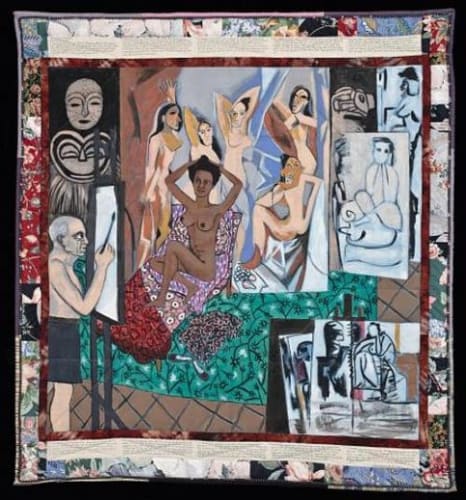On Saturday, The Phillips Collection in D.C. will debut Riffs and Relations: African American Artists and the European Modernist Tradition, a pioneering exhibition expanding the narrative of modern art in America by exploring the rich and complex history of 20th– and 21st–century African American artists and their responses to European modernism. Organized by guest curator Dr. Adrienne L. Childs and The Phillips Collection, Riffs and Relations will be on view exclusively at The Phillips Collection from February 29–May 24, 2020.
“We are proud to feature this groundbreaking exhibition at The Phillips Collection, the first museum of modern art in America. Through his support of living artists, our founder Duncan Phillips helped to broaden and shape discussions on modern art by displaying works from various times and places to tell a more comprehensive story,” says Dr. Dorothy Kosinski, Vradenburg Director and CEO of The Phillips Collection.
Modern European art has served as a guidepost for many African American artists. Riffs and Relations will explore how blackness has often been conceived through the lens of international connections and complex dialogues. The contributions of 53 artists will be on view including Romare Bearden, Robert Colescott, Renee Cox, Leonardo Drew, Hank Willis Thomas, Wangechi Mutu, and more, shown alongside pieces by Henri Matisse, Pablo Picasso, and other European modernists. The 72 works include paintings, photographs, prints, mixed media, and sculpture drawn from private and public collections in the US and Europe. This assembly of compelling objects addresses themes including representations of the female body, modernist “primitivism,” cubism, landscape, and abstraction.
In their efforts to represent African American life and history, artists like Aaron Douglas, Jacob Lawrence, and Hale Woodroff drew inspiration from European traditions and iconography. Others, including Romare Bearden and Robert Colescott, used imagery to question and challenge the supposed authority of European art. Emma Amos and Faith Ringgold have addressed the female form as a site of contention in the history of art, particularly at the hands of Matisse and Picasso. Felrath Hines, Norman Lewis, Martin Puryear, Barbara Chase-Riboud, and Alma Thomas forged new territories as they interrogated abstraction. Many of these artists sought out aesthetics and ideological approaches that were not limited by the restrictive politics of both whiteness and blackness in America.


